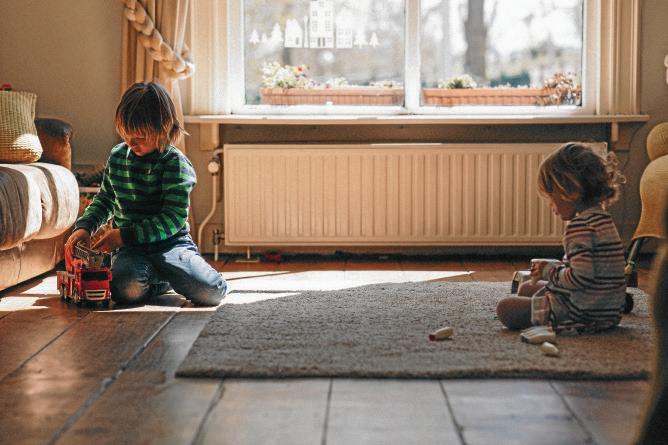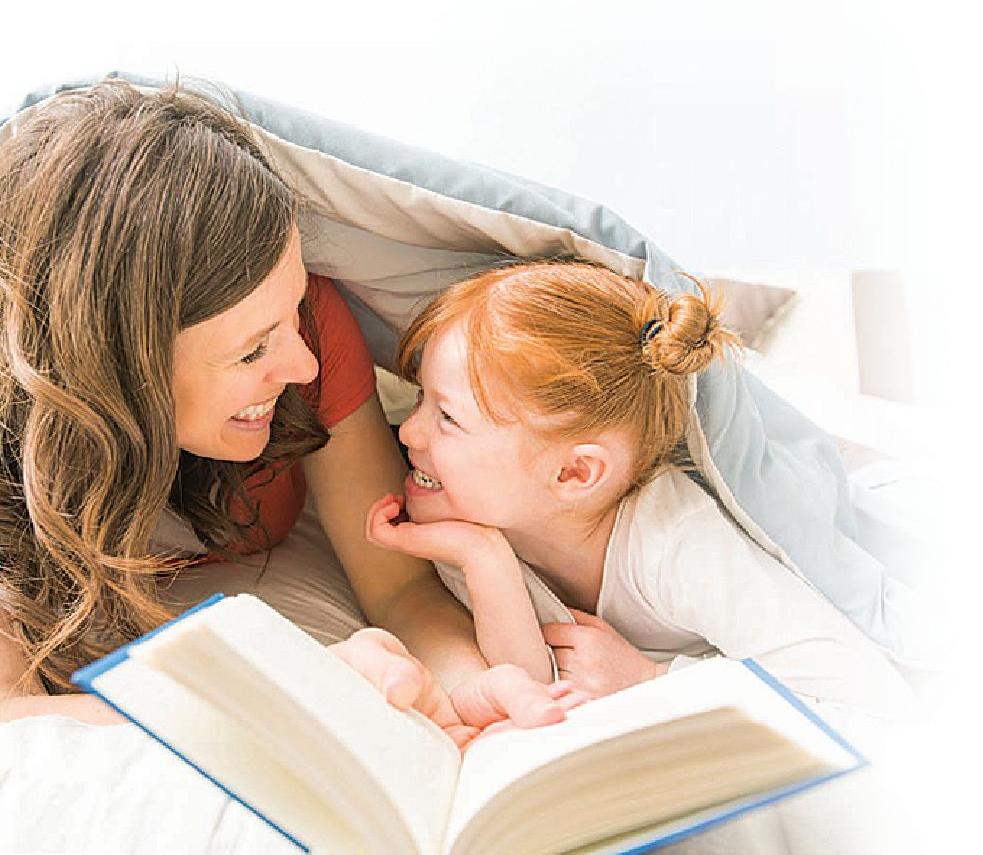
4 minute read
Parallel Play
ADOBESTOCK
PAR AL LEL PL AY IS AN IMPORTA NT L IFE SKIL L FOR KIDS
Advertisement
ASHLEE COFFEY
Momaha.com Editor “But I want him to play with me!” This is a common phrase I hear from my 5-year-old son, Elliott.
Normally, my two kids play together nicely. But sometimes my 8-year-old son, Sam, decides he either wants to read or just play with toys by himself. This isn’t OK with Elliott.
He’s always been a bit of a needy child. When he was an infant, I called him my “Velcro baby.” He always needed to be with me or my husband. If he didn’t see us in the room with him, he’d cry.
As he’s grown, it’s stayed much the same, though he has gained some independence. Especially when Sam started school and no longer attended daycare with him. That was a big turning point for us.
But then the coronavirus pandemic hit and both of my kids stayed home with us for more than a year. Gone were Elliott’s days of being without any of his family members. There were no other kids to play with. No other adults to interact with. Just us.
He regressed a lot.
Starting school this year has definitely helped him,
but we still struggle at home some. Lately, we’ve been trying to introduce the idea of parallel play.
Parallel play, if you’ve never heard the term, is the idea of children playing alongside each other without needing to interact. So in my case, one child might be playing with toys while the other does a puzzle next to him.
A New York Times article about parallel plays states, “Although not a discrete developmental phase, engaging in parallel play is an important part of how toddlers learn to interact with others, share and become social beings.” (I also want to point out here that parallel play isn’t just for kids. It’s good and healthy for adult relationships if done right.)
While we’re still working on playing independently — there are some good and bad days — here are some ways we’re helping Elliott to practice and gain confidence in parallel play.
ENCOURAGE HIM.
Elliott is 5. If I tell him, “Go play by yourself,” he gets easily overwhelmed.
So when he’s upset that his brother wants to do his own thing, my husband or I sit with Elliott and ask him what he’d like to do. If he shrugs his shoulders — his usual response — I help him come up with stuff to do. I offer to get out a bin of specific toys for him. I mention coloring, playing with Play-Doh, doing a puzzle or playing a game.
When he’s especially stubborn, and none of those ideas sound good to him, I tell him I’ll give him a few minutes to think about it and he can come find me when he’s ready. More often than not, he’ll start doing one of our suggestions on his own after I leave.
While I do think it’s important for kids to be bored and figure it out on their own, sometimes kids in that younger age group just need a little bit of help. When there are so many choices (and you’re already in a bad mood), picking something can be hard.
LET HIM HANG OUT WITH US.
Sometimes a change of scenery is good for kids. If they mainly play with toys in their room, it can be fun to bring them out into the living room.
Depending on what Elliott wants to do, I will encourage him to bring his activity out to wherever I am. That way he can sit and play and still be able to talk to me if he needs. He feels less alone than being in the room with his brother, who often gets so engrossed in his books that he completely ignores Elliott.
START SMALL. PRAISE OFTEN.
We don’t make Elliott play for hours by himself. That doesn’t do him any good and I don’t think it’s healthy. So we started out small and have gradually increased the time. We set timers, too.
They used to be small increments — five to 10 minutes at a time — and have gradually increased to anywhere from 15 to 30 minutes.
For example, if Sam wants reading time nowadays, we give him 20 minutes (he also gets 30 minutes at bedtime) and set a timer so Elliott knows how long he has to play independently. He has a clear understanding of the expectations and can see the timer counting down.
When he successfully plays independently, we make sure to praise him. We tell him great job and ask him about what he did and what he enjoyed about it. We make sure to point out and praise independent play when he does it on his own, which is becoming more often. We want to build his confidence that, “Yes, I can play by myself and have just as much fun.”
It’s such an important life skill to have — learning to do your own thing even if you have someone sitting right next to you. My husband and I do this all the time — whether we’re hanging out on the couch reading a book, or if he’s playing video games and I’m doodling on my iPad.
It’s nice to just hang out with someone and not feel an immense pressure to entertain each other.
Further Your Child’s Walk
with calming reads the whole family can enjoy. Stop by the bookstore today to check out our extensive selection of children’s daily devotionals.


ALSO AVAILABLE: Best Sellers • New Releases Marriage Resources • Gift Lines Photo Frames • Children’s Toys Personalized Engraving • Journals Mugs • Holiday Merchandise and so much more!








